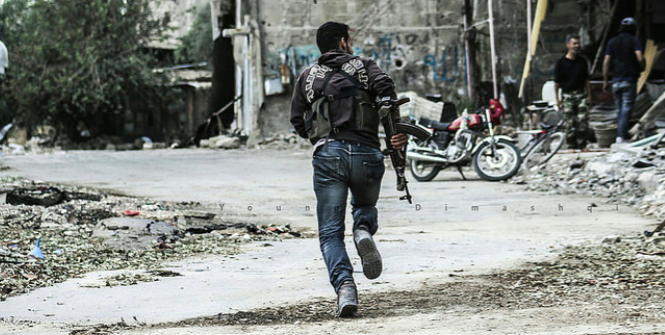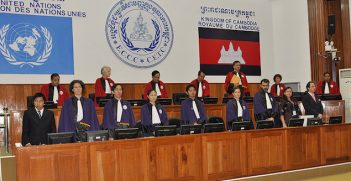Countering Violent Extremism: Lessons From Our Region

In light of the recent Regional Summit on Countering Violent Extremism in Sydney it’s time that Australia learn the lessons of de-radicalisation from our regional neighbours.
Last week Australia hosted the Regional Summit on Countering Violent Extremism in Sydney. It followed President Obama’s Summit in February – albeit on a much smaller scale. This timely summit coincides with a broader recognition that, in order to tackle violent extremism, the Australian government must look beyond the obvious enhancements to the security and intelligence apparatus. There is a focus on softer measures, which incorporate the philosophy of de-radicalisation and disengagement in dealing with homegrown extremists and returning foreign fighters. With this in mind, perhaps it is time to look towards our region and adopt the lessons of Singapore and Indonesia in their respective struggles to combat violent extremism (CVE).
Although there is significant scope to argue the nuances between de-radicalisation and disengagement, de-radicalisation can be considered as the process of shifting a person’s beliefs or fundamental objectives, whereas disengagement involves changing a person’s behaviour by increasing the level of constraints imposed on them; or, simply put, influencing the cognitive and behavioural (respectively) aspects of radicalisation. The distinction is important. Deciding whether a CVE program is oriented towards de-radicalisation or disengagement can have significant implications in terms of the program’s intensity, structure, the level of resources required, overall ‘success’ and the rate of recidivism post-intervention. Moreover, this distinction can influence whether a CVE program is appropriately geared to the specific motivations for entry (activism, perceived injustice, meaning, socio-cultural need and personal gain) and exit (disillusionment, loss of ideological faith and desire for normalcy) within an extremist organisation.
The Singaporean CVE program is arguably the most comprehensive de-radicalisation or disengagement program in Southeast Asia. Leveraging its historic experiences with a communist insurgency, Singapore established a rehabilitation and counter-ideology strategy; a government led, multi-modal program directed towards individuals linked to Jemaah Islamiyah. Targeted at detainees, the components of this program included: psychological rehabilitation and assessment, and building trust with case officers, developing alternative cognitive pathways and maintaining contact with families; the provision of religious rehabilitation, instruction and the correction of misinterpreted concepts by well respected interlocutors (including scholars, clerics and community groups like the Religious Rehabilitation Group); and the provision of social, community and familial service, all with the aim or reintegrating a detainee into society. These services range from educational and vocational training (allowing a detainee to gain employment upon release) to the provision of care and financial support to the families of detainees by community groups (e.g. Inter-Agency Aftercare Group).
Moreover, detainees are reviewed yearly to assess their suitability for release into the wider community. Upon release, detainees are placed on restriction orders but are provided with continual support in the form of religious counselling and social services.
The Indonesian de-radicalisation and disengagement program contrasts starkly with Singapore’s, as it is neither centrally administered nor well resourced. Instead Indonesia operates an ad hoc program that was developed and administered by Detachment 88 (a specialised police counterterrorism unit). The aim of this program is to gather intelligence in relation to terrorist networks, and to reintegrate prisoners back into society. The Indonesian police either utilise the trust they have developed with extremist prisoners or employ former militants to pursue de-radicalisation and disengagement in a culturally sensitive manner. Moreover, it is common for police to pay for the prisoner’s family visits, arrange long-distance learning, and provide a more ‘comfortable’ prison environment – all of which is intended to enhance the prisoner’s support networks and encourage positive cognitive pathways.
Both the Singaporean and Indonesian programs have enjoyed consistent support and qualified success in de-radicalising and disengaging extremists. Figures from the Singaporean program suggest very low rates of recidivism (in 2008, of the 60 detainees involved in the program, 40 were released and only one has been rearrested). Indonesian authorities have reported that its program has been highly successful in gaining intelligence from extremist prisoners, while anecdotal evidence suggests some success in encouraging prisoners to disengage from violence.
The success of these programs highlights a number of lessons which Australia could adopt in its own CVE program. Both programs stress the importance of early intervention, monitoring and being receptive to traumatic emotional events and other factors that may push an individual out of an extremist group, finding and utilising credible interlocutors that can engage with extremists, providing holistic support to extremists with the aim of reintegration into society, and combining cognitive de-radicalisation efforts with incentives that encourage behavioural disengagement with violence. The fact that the Australian Federal Police is currently assessing reformed radicals to use in CVE efforts suggests that Australia is increasingly seeing the value of ‘soft’ programs; in this case, the utilisation of interlocutors with a ‘voice’ that resonates within the community.
Of course there are caveats in drawing conclusions based on the Singaporean and Indonesian CVE programs. A lack of definitional consensus, divergent circumstances and the lack of an accurate method to measure the success of de-radicalisation (recidivism is only an appropriate metric for the behavioural aspects of extremism) all limit these conclusions. Further still, there will always be the risk of individuals being unresponsive to any CVE efforts, which would necessitate an intrusive (and counterproductive) risk assessment process.
Although the Australian Government is currently pushing for blanket punishments (e.g. revocation of citizenships for dual-nationals) and hardening its language on extremism, it was encouraging to see the Regional Summit focus on a broader agenda, which included counter narratives and ideologies, radicalisation and the role of women in CVE. The Summit reinforced the overseas experience that does not solely consist of intelligence and law enforcement measures. Rather, It requires a more nuanced and supportive system that aims to safely reintegrate extremists into the broader community.
Gayan Vithanage is an intern at the National Office of the AIIA. He has a Masters in Policing, Intelligence and Counter Terrorism from Macquarie University and a Bachelor of Social Science (Criminology and Policy) from the University of New South Wales. This article can be republished with attribution under a Creative Commons Licence.





